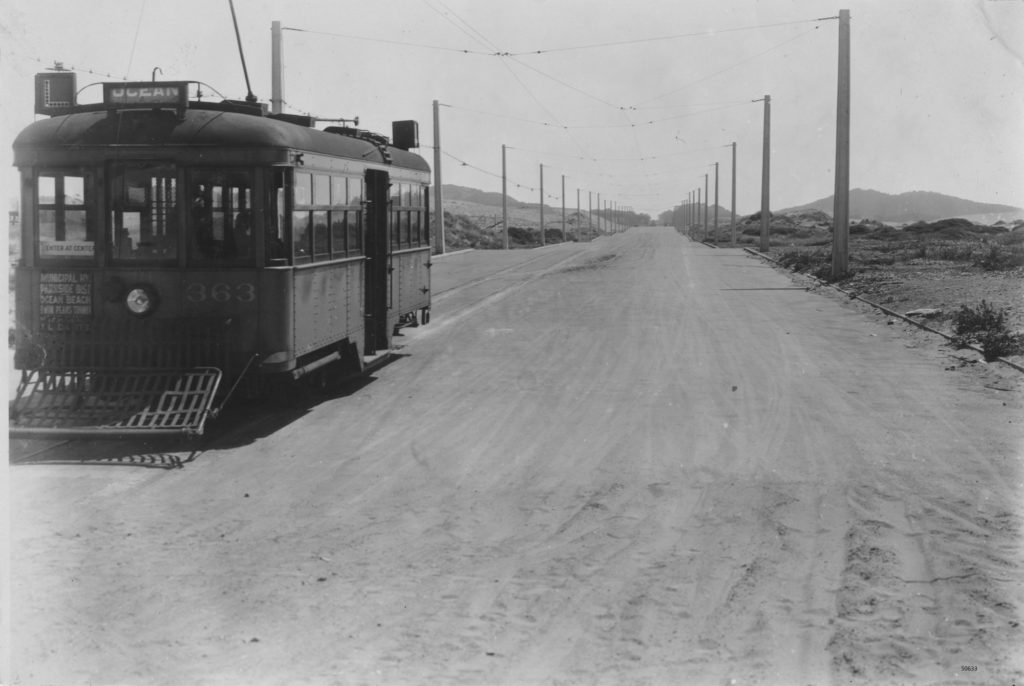
On April 12, 1919, the first L-Taraval streetcar hit the rails, overcoming obstacles to begin a century of service that continues today.
The Twin Peaks Tunnel had opened fourteen months before, bringing fast streetcar service from downtown to the nearly empty southwestern quadrant of the city. Initially, there was just one line, the K, but property owners in the areas above and west of the tunnel, who had paid for its construction, expected – and demanded – more. So, Muni negotiated with the private United Railroads to share the tracks of URR’s little used Parkside line on Taraval Street between 20thand 33rdAvenues. URR wanted the city to share the Twin Peaks Tunnel in return for sharing this track and Ocean Avenue track for the K, line but the city refused and paid cash for the rights instead. Muni then laid tracks from West Portal via Ulloa Street, 15thAvenue, and Taraval to connect to the Parkside line tracks, allowing the L to open as far west as 33rd Avenue.
There was little development west of Twin Peaks in April 1919. United Railroads, by far the dominant transit company compared to the 6-year old Muni, did run downtown from the area, but by slow surface streets (Ocean Avenue and Mission to the south, 20th Avenue and Haight to the north), making it faster for downtown workers to take ferries from Oakland than to take the long way around Twin Peaks by streetcar. At first, the L streetcars stopped at West Portal, where riders had to transfer to K-line streetcars to . go through the tunnel and along Market Street. Muni used its full-sized streetcars for the L-line shuttles at first, but as soon as smaller “dinky” single-truck cars were delivered for Muni’s hill-climbing Union Street line in 1922, a few of them were dispatched to the L, where they were big enough to handle the still-sparse ridership.
By early 1923, the L-line tracks reached Ocean Beach across the sand dunes and by the end of that year, the shuttle was replaced by service through the tunnel to the Ferry Loop, using full-size streetcars. The Twin Peaks Tunnel service significantly accelerated the development of blocks along the new, fast streetcar lines, while blocks deeper in the central Sunset District languished as sand dunes, with only the odd house here or there. In 1928, the Muni matched the L-line on the northern edge of the Sunset by building the Sunset Tunnel under Buena Vista Park and opening the N-Judah line.
In 1937, Muni took advantage of federal funding through the Works Progress Administration to extend the L line south from 46thAvenue and Taraval to Wawona Street, very close to the popular zoo and Fleishhacker swimming pool, heightening competition with the competitor’s 12-line on Sloat Boulevard.
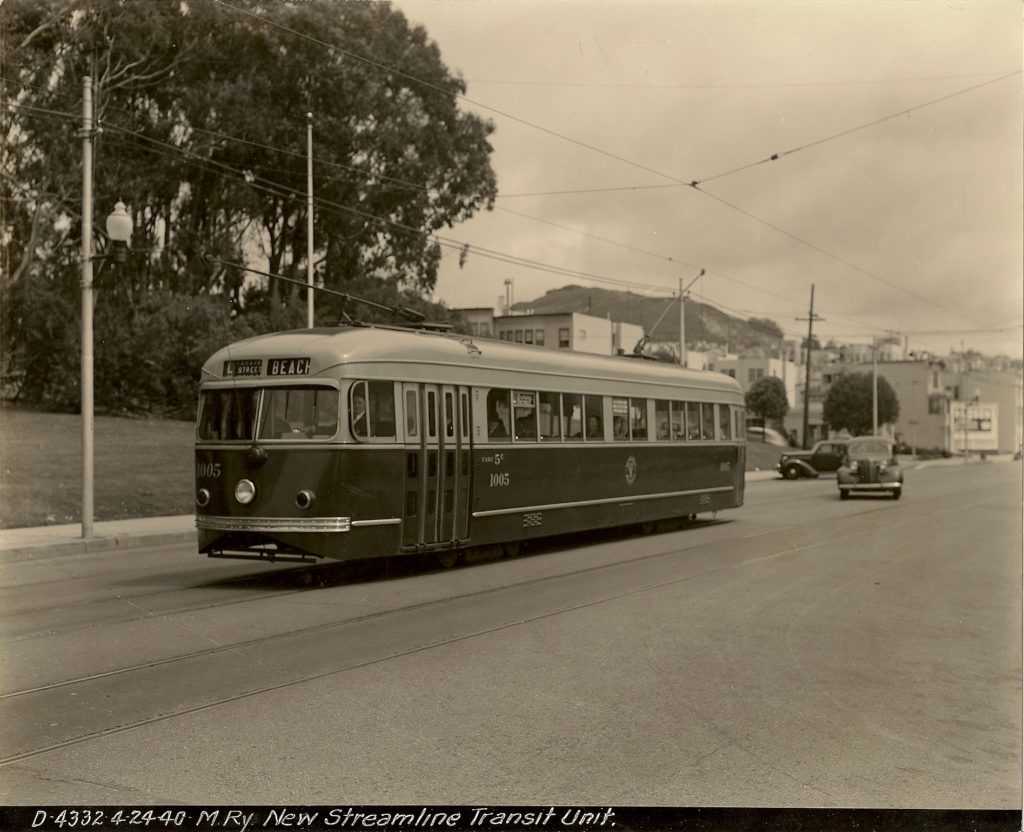
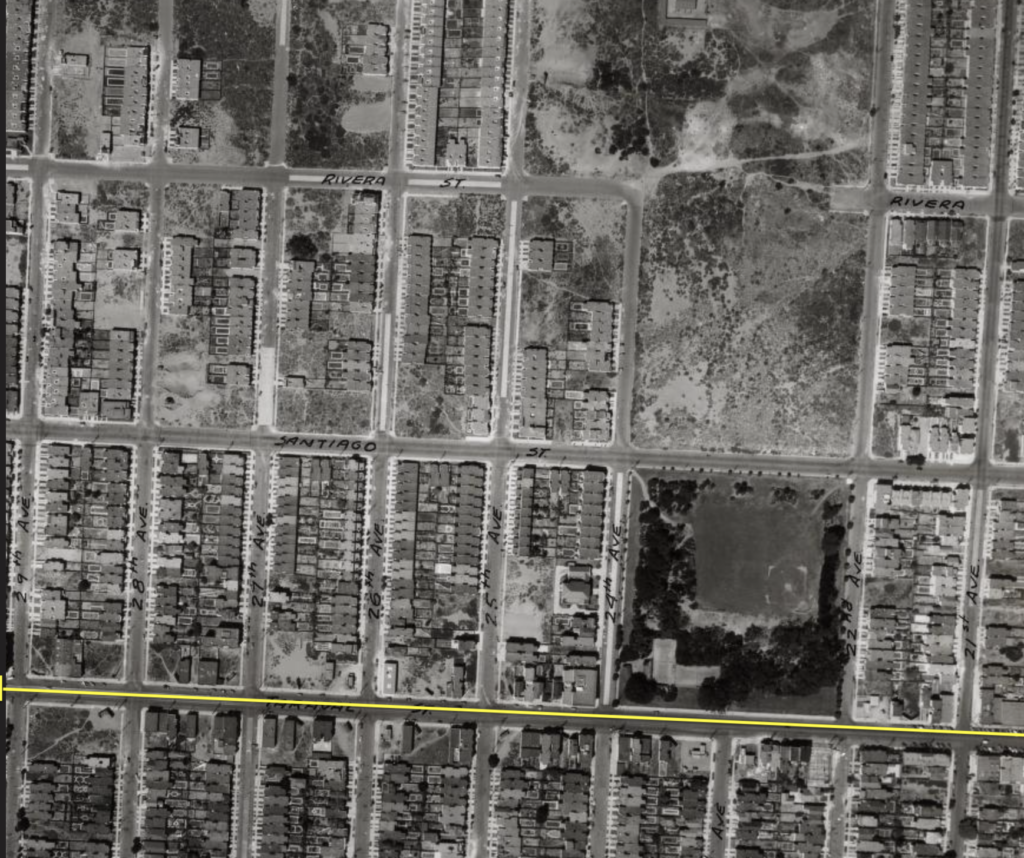
Muni took over its competitor (renamed Market Street Railway in 1921) during World War II. The 12-line on Sloat Boulevard was included in the purchase. It featured a private right-of-way in the middle of that broad roadway, and could have been used as a tool to spur higher-density residential development on that corridor, if only the Sloat tracks had been connected at St. Francis Circle to use the Twin Peaks Tunnel. (The giant Parkmerced development at the south end of 19th Avenue, and the nearby Stonestown shopping center, which both arose after the war, benefitted from Muni’s adjacent M-Ocean View line, which used the tunnel, but had been little used after it opened in 1925 and had even been shut down for a time for lack of ridership.)
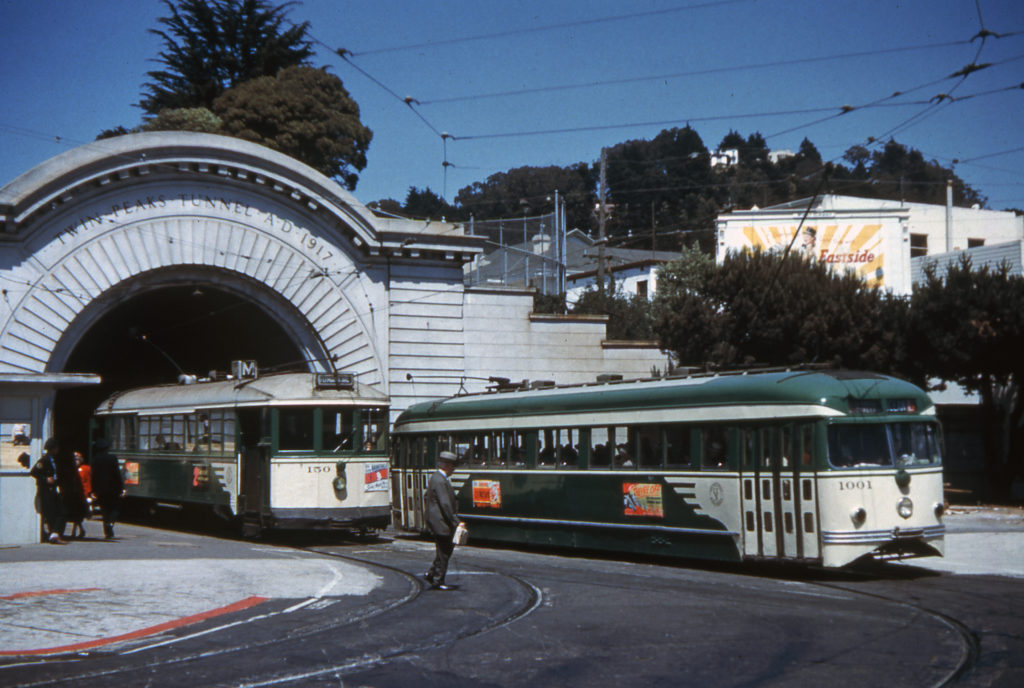
One factor that weighed against Muni keeping more streetcar lines in that period was rising labor costs. San Francisco voters had mandated two operators for each streetcar, although only one for a bus. This caused Muni to substitute buses for the outer ends of the K and L lines on nights and Sundays in the early 1950s, and studies were done to see if it was feasible to convert the Twin Peaks Tunnel to bus operation. (It wasn’t: too narrow.) Approval of single-operator streetcars in 1954 ended this existential threat to the L-line, and it has been an enduring part of Muni’s streetcar network ever since, converting to light rail vehicles in the early 1980s when the Twin Peaks Tunnel was connected to the new Muni Metro subway under Market Street.
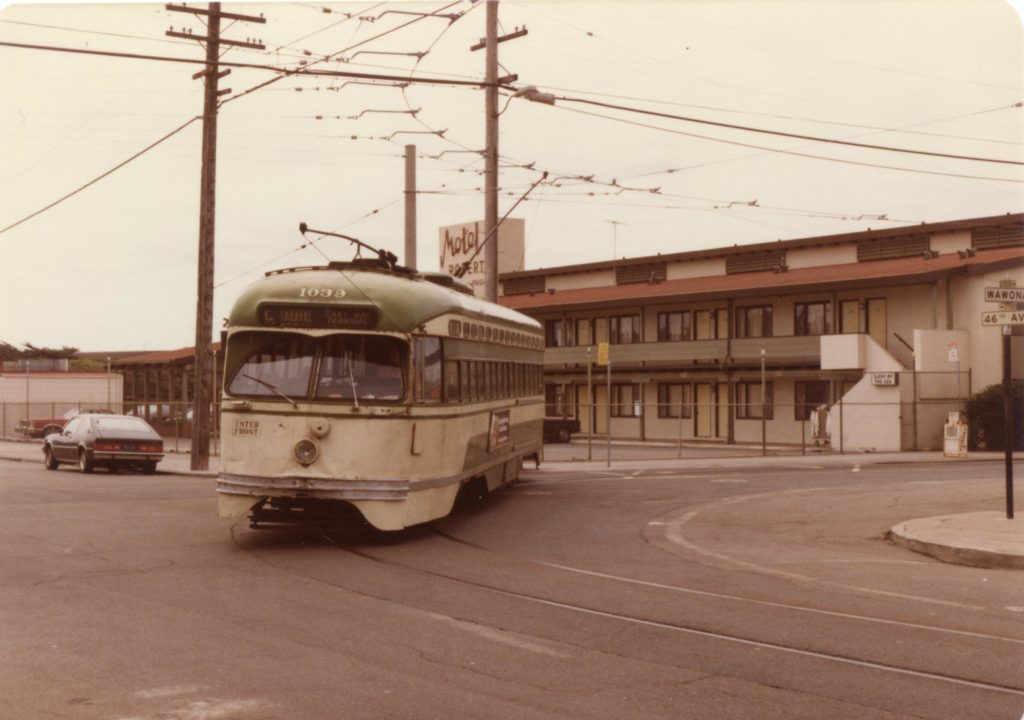
More recently, Muni has moved to improve safety on Taraval Street by building boarding islands for L-line trains, and has shortened L-line trips by reducing the number of stops on Taraval.
Today, the Parkside District is a vibrant, diverse neighborhood made possible, and still kept moving, by the L-Taraval. Muni is planning various centennial events, which we will keep you informed of here. SFMTA’s Jeremy Menzies has dug into the archives for a great story, and the Examiner has a nice tribute to the L-line here.